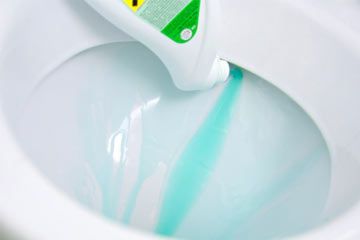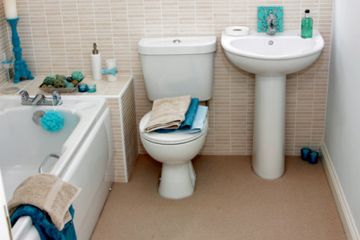Modern civilization wouldn't be all that modern without the toilet bowl. No longer must we crouch precariously in outhouses or dispose of icky chamber pot contents. I actually believe that indoor plumbing tops pretty much any invention out there, including electricity. But it can still be more than a little annoying when the toilets you appreciate so greatly fall victim to dreaded calcium deposits. Fortunately, calcium stains are typically fairly easy to eliminate with a little elbow grease and a handy solvent or two.
Before we get started on the "how-to" portion, it's always important to know a few facts about the stains you're going to be attacking. First of all, "calcium deposit" isn't code for anything gross. In fact, they're exactly what they sound like -- a build-up of calcium and other minerals commonly found in your home's water supply. The toilet is a prime place for calcium stains because there's always some water hanging out in the bowl, just waiting to cause problems. Calcium stains build up over time, but it often feels like they appear out of thin air overnight, resulting in an unsightly brownish/orangish/pinkish ring around your once pristine toilet bowl.
Advertisement
Calcium deposits tend to be bigger and badder in places with hard water or well water because there's more lime and minerals present in the water supply. In fact, 85 percent of water in the United States is hard, so it's likely that you'll battle more than one calcium stain in your lifetime. Calcium deposits aren't limited to the toilet, unfortunately. They can run rampant anywhere water flows, including your sink and shower doors, walls and shower head.
There are ways to keep calcium deposits from happening or getting out of control. First, you could install a water-softening system in your home. Unfortunately, those are seriously pricey, so you might not have room in your household budget. The cheapest (and most logical) method is probably just to tackle any calcium stain the instant it starts to appear. Much like tartar on your teeth, the longer you let it build up, the harder you'll have to work to get rid of it.
If your bowl is already awash in calcium stains, fear not! Check out the next page for helpful tips on how to remove them quickly and easily.
Advertisement


